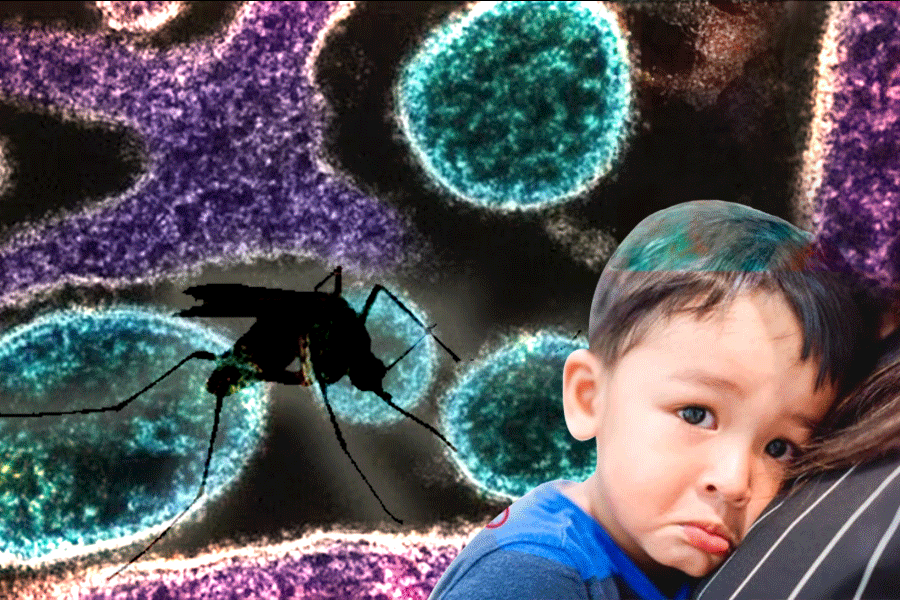Eight children have been killed in Gujarat as the Chandipura virus – that was first detected in 1965 in a Maharashtra village – has made a comeback this month in six districts of Gujarat and is reported to be spreading.
On Tuesday, according to the Gujarat health minister Rushikesh Patel, two more children died taking the toll to eight; seven others were still battling for their lives.
"Five out of six deaths have been reported from the civil hospital in Himatnagar in Sabarkantha district. All 12 samples, including eight from Sabarkantha, have been sent to Pune's National Institute of Virology (NIV) for confirmation," Patel was quoted as having said.
In Gujarat, the cases have been reported from the districts of Sabarkantha, Aravalli, Mahisagar, Kheda, Mehsana and Rajkot. Though detected almost six decades ago, no treatment or vaccines have been developed for the disease, which despite its rare appearances is known for its killer streak.
The first report of the Chandipura virus case happened about a week ago, when four children died at the civil hospital in Sabarkantha’s Himatnagar.
What are the symptoms of Chandipura virus?
The Chandipura virus typically displays symptoms similar to flu-like fever which can rapidly escalate to a high-grade one, body aches, diarrhoea vomiting, acute encephalitis and seizures, experts said.
This happens within 24 to 72 hours of the onset of symptoms which makes it one of the most dreaded viruses. The virus typically affects children up to the age of 14 years.
The last major outbreak about 20 years ago had claimed 322 children in Andhra Pradesh, Maharashtra and Gujarat. It was described as a mystery disease then.
Rapid transmission and a high mortality rate make the Chandipura virus a challenge for doctors and public health officials alike.
A member of the Vesiculovirus genus of the Rhabdoviridae family, the pathogen is known to be transmitted by mosquitoes, ticks and sandflies. Outside India, the virus has been detected in Nigeria and Senegal, where the vectors were hedgehog and sandflies.
“This is a very rare form of virus and needs more research,” said Dr. Sayan Chakraborty, consultant, infectious diseases, Manipal Hospitals, Calcutta. “There have been no reports of any cases in Bengal ever, though the vectors are common here as well. Possibly the virus thrives more in dry climate. The last known major epidemic was about 20 years ago in Maharashtra and Andhra Pradesh.”
How is the Chandipura virus treated?
Chakraborty said except for treating the symptoms, there is little else to be done in such cases. “Only symptomatic treatment is possible in the absence of any anti-viral, and take proper care of the patient in an intensive care unit,” said Chakraborty.
Dr Abhishek Tiwari, in-charge of the paediatric and neonatal unit at ILS Hospitals, Calcutta, said parents should keep a watch on insect bites.
“It is much like dengue which is common in this part of the country. Unlike dengue, dirty water and garbage are the prime sources of the vector to survive,” said Tiwari. “It is important to keep our homes and surroundings clean as prevention is the only way out.”
Tiwari said any sudden appearance of a rash or an insect-bite should not be ignored. “In case the child has sudden fever or falls unconscious, he or she should be immediately hospitalised,” he said.
Doctors said that the disease was lying dormant for many years since it was first discovered in 1965 and the strain isolated, as there were no reports of any human outbreak till sometimes in the 1980s when a child was killed in present-day Chhattisgarh’s Raipur, who succumbed within 24 hours of being hospitalised.
Since the first major outbreak two decades later in the three states of Andhra Pradesh, Maharashtra and Gujarat, there have been sporadic outbreaks in all the three states. Between 2009 and 2011, 34 deaths were reported from the same disease in different states.











